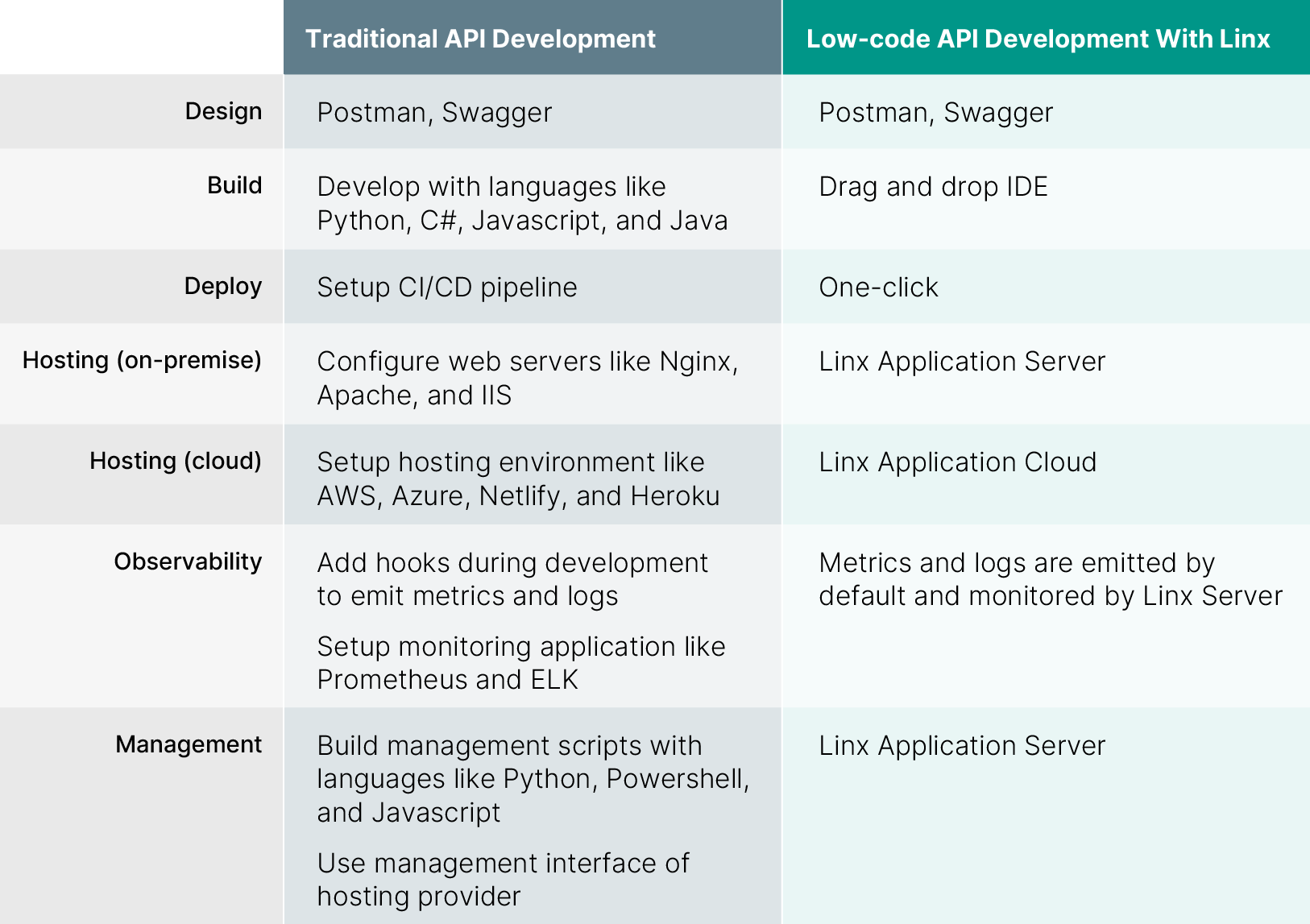Low-Code: A launchpad for API Development
Consuming APIs is something with which all developers are familiar. But have you ever needed to build an API?
Join the DZone community and get the full member experience.
Join For FreeWith the rapid increase of APIs emerging over the last few years, an ecosystem of low-code solutions has emerged to connect the dots between existing API-enabled services. These services are well within reach of the average developer, opening up a wealth of API-driven capabilities associated with the applications, services, and platforms we already depend on.
But what if you had to build your own API?
Low-Code Can Be the Perfect Match
A recent Statista report found that a whopping 29.5% of API developers’ time is spent programming and coding APIs. The second most time-consuming task was manually debugging code, which was 17%. Therefore it is no surprise that using APIs converges well with the concept of low-code platforms.
Low-code development accelerates the laborious line-by-line hand-coding - repeatedly writing, testing, and debugging code until it works correctly. It’s also a handy time-saver for replacing writing authentication code, parsing logic, and the mundane aspects of writing integration code to an external service. A key tradeoff to adopting a low-code platform for API development is binning your preferred frameworks, templates, and boilerplates for something new. This may seem daunting - and timely - at first, but the real challenge in delivering an API is time, complexity, profit, and process. So again, the right tool(s) is key to API success.
Design
It is natural for developers to roll up their sleeves and begin coding to deliver an API. It is what they are trained to do. But any good engineer can tell that if you start with a shaky foundation or bad bedrock, you will collapse, and the same is true for APIs. There isn’t an API developer worth their code that hasn’t come across Postman. It is highly popular and offers well-organized, structured documentation and a comprehensive set of tools for testing.
Build in Low Code
The whole point of programming is to solve complex problems, not introduce more. To build an API, the developer has several options - from the popular (Python) to the divergent (low code). You should consider the technical quality of your task, the knowledge required to complete the job, and your available resources. For example, Python is an excellent choice for API builds, but it is surprisingly complex when deploying your app. Conversely, if you have no affinity for any languages, a low code tool might be the answer as they are quicker to understand and use.
Linx is a popular choice for API development as it is a general-purpose backend platform. It uses prebuilt programming components and a wide range of technologies and services that you might require for your API, including databases, email, message queues, security, and more.
Test With Postman
Exposing or consuming an API should be easy enough for most developers worth their salt. Still, they can easily be bogged down with complexity when working with many different APIs and systems. Furthermore, trying to test, implement, and manage everything turns what is supposed to be something straightforward into another layer of complexity. Using a tool such as Postman makes the process more accessible by providing a more precise method to verify the functionality, uptime, reliability, and security.
Hosting
Choosing the location to host your server is a big decision. Every project is different, each with specific needs for performance, scalability, and administrative features. With traditional API deployment, you would be responsible for the hosting environment. You will need to maintain the infrastructure - database objects, files, storage configurations, and plugins- even if it’s hosted on AWS or Azure. No matter where you deploy your API, it is a good idea to add operational and functional monitoring so you can follow the health of your service and analyze the API usage. In summary, a lot of work.
Low-code is an excellent option if you want to quickly get something out of the door, as the platform removes a bucketload of complexities around hosting and maintenance. The Linx platform, for example, provides a dedicated hosting server with standard monitoring, access control, and versioning. This means you will spend less time investing in complicated and increasingly unnecessary from-scratch infrastructure processes and maintenance.
Documentation
Providing easy-to-navigate, accurate documentation is essential in helping people understand what it does and how each request works. Postman (based on your specification) and Linx (from your application data) can dynamically generate documentation.
Wrapping Up
APIs have become the center of software development. They allow for flexible integrations and customization of existing products, enabling developers to enrich and enhance services in new and creative ways. The quicker you can get your product to production, the better. Of course, there will always be more problems to solve, but selecting and using the right tools can deliver high-quality APIs significantly faster and cheaper.
Opinions expressed by DZone contributors are their own.

Comments